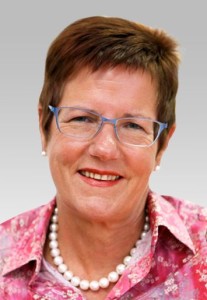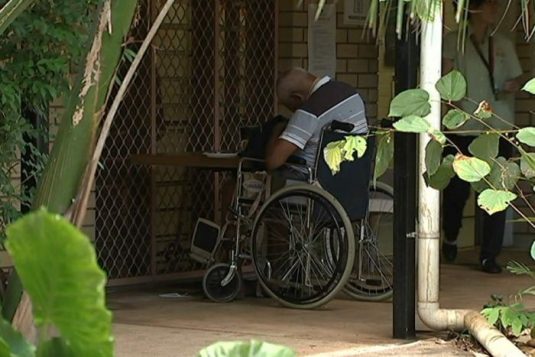It’s the stark reality for many older, mainly indigenous, Australians living in our remote and rural communities.
In August, the ABC reported that plans to build a long-awaited aged care home in Nhulunbuy, the NT’s fourth largest regional hub, had been delayed again.
Many people living in the north east Arnhem region end up on the waiting list for aged care homes in Darwin, 600km away. A 2015 Federal Government report identified 1,130 people as ageing in the town and its nine surrounding communities, or just over 8% of the population.
The development for the project had been scheduled to be done by June this year, with the building up and running by June 2017. Funding for a previously planned 10-bed facility fell through in 2012.
So what happens to the residents who don’t get transferred to Darwin?
More demand for aged care
They usually end up staying with family in overcrowded conditions or paying over $200 a week to live at a Nhulunbuy hostel which is close to hospital and respite services.
It’s a case that highlights the growing crisis in indigenous aged care – one that’s only set to worsen.
While health outcomes are still much lower for indigenous people compared to the rest of the population, a rise in life expectancy is expected to dramatically increase the number of Indigenous seniors in the next decade.
Currently there are 51,303 Indigenous Australians aged over 60 – by 2026, that number will be nearly 90,000.
That’s a lot of people who will likely need access to aged care or home care services – and the challenges of providing this care to the two-thirds of the indigenous population living in rural and remote areas is considerable.
In July, the Department of Health said there were 820 aged care places throughout Australia specifically for indigenous people as well as mainstream services. 11 aged care projects are also planned for the NT at a cost of $36 million.
The need for culturally-appropriate care

Most indigenous people needing high levels of care in remote communities still have to leave their homes for larger towns and cities, often isolating them from family and friends.
For Robyn Batten, former Executive Director of Blue Care and Australian Regional and Remote Community Services Limited (ARRCS), ARRCS and now Strategic Advisor to the Borderless Healthcare Group, this is why it is essential to provide culturally-appropriate care.
“We now that people would prefer to be an indigenous-specific facility,” she says. “The food, décor, and rhythm of the day are built around Aboriginal peoples’ needs with mostly Aboriginal staff who speak their languages.”
However, finding and training enough indigenous staff is a major issue. “It’s very hard to get staff,” Robyn says. “We’re committed to employing local people but a lot of support is needed to train people for working in aged care and funding for that is not readily available.”
Government funding falling short
There is also the high cost of delivering services to regional and remote areas.
The Federal Government does provide a Home Care Viability Supplement, a payment for improving the capacity of small rural aged care services to provide care, but Robyn said the additional costs in remote areas far exceed the viability payments.
“In some areas you have to fly staff in and out and provide housing. Staff housing is a really important part of being able to get staff at all,” she says.
Technology is another barrier too. You need to call a 1800 number or use the MyAgedCare website to request an aged care assessment. Many indigenous people in remote areas don’t have landlines and avoid using their mobiles to save on credit.
Cut off from services
“Connectivity in some of these areas is sometimes non-existent,” adds Robyn. “MyAgedCare is certainly not an option for some of those communities such as Tennant Creek and they can’t access the services in the same way as they just aren’t culturally appropriate.”
A spokesperson for Assistant Minister Ken Wyatt has said the Government is working to streamline the MyAgedCare process, saying family and friends can contact them on behalf of family members.
Robyn says the issue of indigenous aged care is still not high enough on the government agenda though. “It’s not commonly talked about as a major issue, but it is a very serious issue for those communities.”
The Federal Government has now said a service provider for the Nhulunbuy aged care home will be appointed by October. Clearly it can’t come soon enough for the community.



